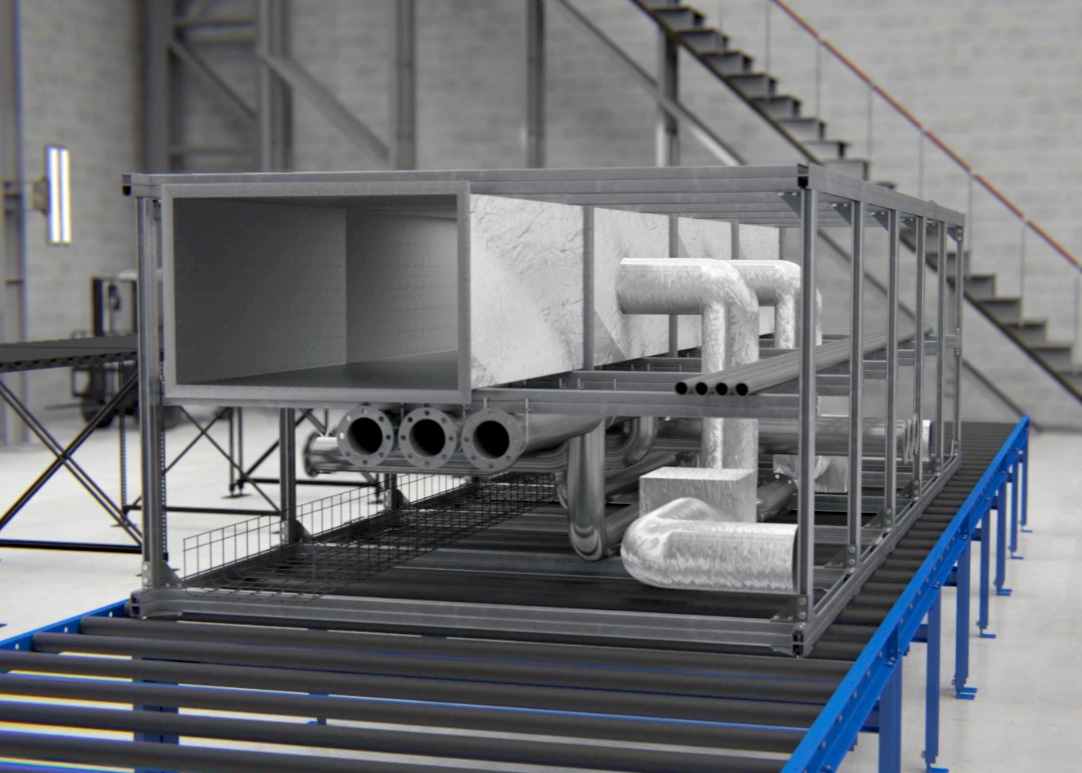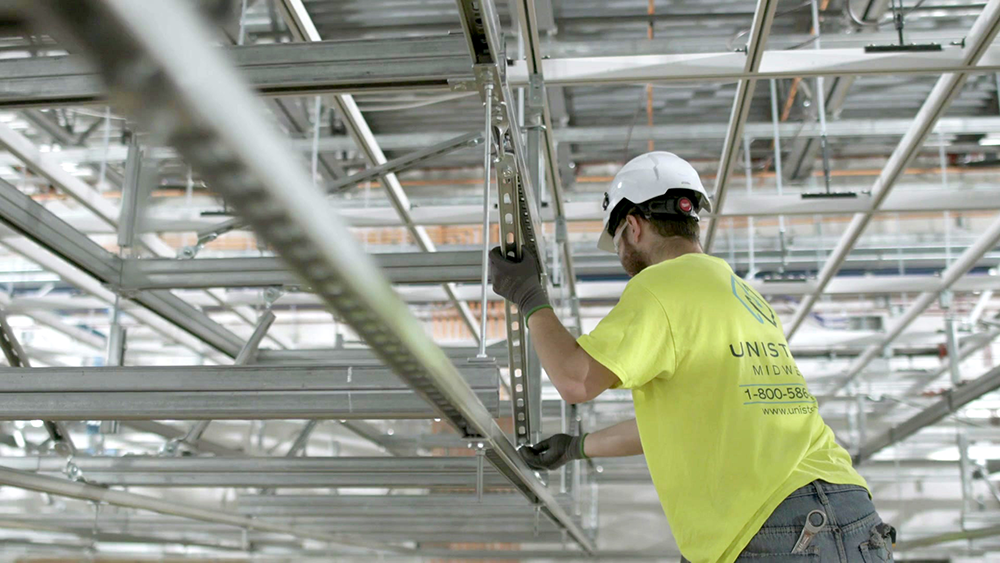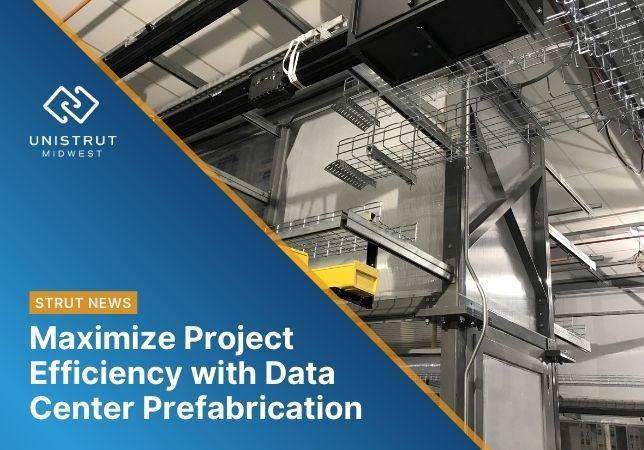Maximize Project Efficiency with Data Center Prefabrication
August 13, 2024
As the demand for hyperscale data centers increases and construction project timelines shorten, the need for skilled construction teams continues to grow in an already strained market. One way to maximize your team's valuable time on a data center build is to shorten installation by leveraging prefabrication.
Unistrut Midwest is an industry leader in data center prefabrication with two tailored offerings for the mission critical market: multi-trade rack prefabrication and ground mount containment systems.

Multi-Trade Rack Prefabrication for Data Centers
Prefabricated Multi-Trade Racks (MTRs) allow you to begin construction of key mechanical components offsite in parallel to primary structure construction. With the multitude of MEP services required for data centers, this can be a huge time savings.
While your primary structure is being built, the Unistrut Midwest team is assembling your MTR and coordinating with trades like HVAC, electrical, plumbing, and even drywall to fit the rack with all required components. From there, the Unistrut Midwest team will deliver the completed racks and can lift them into place and attach to the structure. By using materials like Unistrut and Sikla, installation requires only hand tools, no hot works permits or lengthy installation procedures.
By leveraging MTR prefabrication in tandem with primary construction, critical utilities can be installed as soon as the structure is ready, with many installations taking only an afternoon to complete. This frees up skilled laborers for other tasks on site.
Ground Mount Containment System Prefabrication
Historically, data centers have relied on structural ceiling grids to support services like containment systems. But as data centers increase in size and performance, those overhead support systems can become unwieldy and expensive. Moving forward, the industry will see a rise in ground mount containment systems in order to support those critical facilities while saving time and driving down labor costs.
Unistrut Midwest's existing prefabrication infrastructure allows us to plan for future prefabrication needs like ground mount containment systems. These support structures integrate all aspects of cable management and containment into a single design, providing a complete solution for data center projects. Modular support solutions like Unistrut and Sikla can handle both the large load capacities required of ground mount supports and the short timelines seen in the industry.
Our proven prefabrication techniques can adapt easily to future solution demands, and the repeatable components of a ground mount containment system are the perfect example. These components can be pre-cut to size, pre-loaded with fittings, and pre-assembled so that they are ready for installation. All of that prefabrication drastically reduces the amount of time spent on site cutting and assembling, reducing man hours and optimizing your team's time.
Additional Prefabrication for Data Centers
There are dozens of additional opportunities for prefabrication in your data center project, and perhaps even more in the future as solutions adapt to increasing demands.
Liquid cooling is a rising trend in data centers, delivering a more sustainable and more effective form of server cooling that can handle the larger workloads of hyperscale data centers. But cooling large workloads means using large components, with many hyperscale data centers requiring pipes that are up to 20 inches in diameter and that can accommodate massive amounts of water and weight. Sikla has the strength to support that weight and its bolted system makes it an inherently good fit for prefabrication. Instead of weeks of on-site welding to build supports for liquid cooling systems, Sikla prefabrication can be done offsite and the finished supports can be installed in a matter of hours.
Backup generators are a critical safety measure for data centers, where even a few minutes offline can be catastrophic. In order to maximize space in the data center itself, these backup generators are typically installed outside the building. All the necessary cables and conduit are then fed back into the data center, but they require support from something like a Sikla goal post (made from H and T stands). These supports are another opportunity for the cost- and time-savings of prefabrication.


